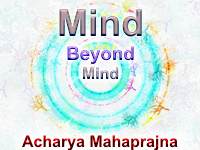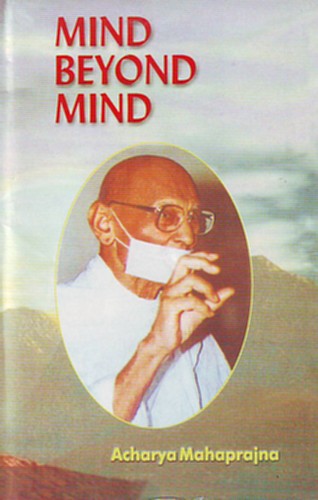
Asanas are the means of seasoning the body. You might have heard that Mahavira used to keep standing for sixteen days and nights at a stretch. The standing posture is also an Asana. Mahavira used to sit on his feet for a whole night. He would sit for twenty-four hours altogether on the toes of his feet only. Thousands of ascetics belonging to the Jain, Buddhist, and Vedic sects practised bodily discipline through the Asanas. It may appear odd to see a man purposefully sitting in a certain physical posture for long hours, but it is a fact, howsoever odd it may appear to be.
The Kayotsarga posture in which the body is completely immobilized may appear to be a surprising feat. Bahubali, the son of Bhagavana Rsabha stood for twenty months at a stretch in this posture. It is narrated that grass grew thick under his feet, creepers climbed over his head and birds built their nests on it. And yet he stood motionless and regardless of what had happened to him. All these seemingly impossible things happened because Bahubali had completely seasoned his body. He knew how to operate the centres of psycho-somatic energy in it. Anybody who exerts himself can achieve this success.
There are three kinds of physical postures: the sitting postures, the standing postures and the prostrate postures. It is absolutely necessary to practise and master the Asanas in order to season the body. The purpose is to requisition the energy centres in the body.Another means of achieving this aim is to manipulate respiration. Respiration is an essential function of the body. You cannot season the body without mastering respiration and vice versa. Just as there are thousands of Asanas, in the same way, there are thousands of ways of mastering respiration.
For Preksha Dhyana the practitioner has to practise long breathing, to equalize the time taken in the inhaling and exhaling of breath and to manipulate normal breathing. All these exercises have developed out of the practice of Asanas. One can stop breathing for hours and hours together. Bhastrika Pranayama can be performed for a whole hour. One can shake the whole body by the exercise of fast breathing. He can keep it thoroughly paralysed through subtle breathing. These exercises, however, do not belong to the spiritual plane. They are psychosomatic phenomena. They aim at activating the different centres of the body and preparing them for exercises on higher planes in order that they may manifest the greatest possible energy. They season the nervous system so that it may be able to bear still greater strains in higher sadhana.
Besides Asanas and breathing there is another exercise concerned with the Cakras, which are the centres of energy and can be activated. There are two glands in the brain, which produce the feelings of pleasure and sadness respectively. They stand close to each other. Very great precaution has to be taken while trying to activate them. The activation of the wrong gland may produce quite the opposite of what has been desired. It is the glands and tissues of the body and the brain, which produce the feelings of pleasure and pain and knowledge and energy. That is why we cannot minimise the role of the body in sadhana. The will can operate only through the body. Seasoning the will is a necessary counterpart of seasoning the body. The knowledge tissues and the structures to which they belong have to be activated in order that they may be able to manifest special kinds of energy.
The fluids and the hormones, which the body produces, are of great value for sadhana as well as for health. The Thyroid gland secrets a fluid without which the feeling of pleasure cannot be produced and the feeling of inferiority avoided. The entire physical development of the child depends on the functioning of this gland. This and some other glands determine the moods of our mind. Happiness and sorrow should not be taken to be the consequences of past Karma. The operation of Karma requires a medium. That medium is the body. It will, therefore, be an unpardonable mistake to neglect the body. The spirit of renunciation is not opposed to the body. It does not mean indifference to the body.
Success in sadhana and the manifestation of energy depend on the discipline of the body. No painter can paint a really beautiful picture unless the canvas on which he paints has been properly prepared. A good ground, a good situation and proper instruments are needed to produce a really good painting as well as for success in sadhana.
Man is a psychosomatic entity surrounded by an extra-somatic atmosphere. His mind cannot be separated from his body. As a matter of fact, the mind is a part and parcel of the body because the brain, which is the seat of the mind, is situated in the body. It is the body, which collects the Pudgalas (material particles) for the mind, speech and breath. Like the mind, speech and breathing are also the activities of the body. They release the atoms collected by the body and accumulated in it. The body thus assumes the greatest importance. The energy it generates has to be stored and preserved. We cannot afford to waste it. Unfortunately we waste a lot of energy. The mind and the nervous system release a lot of energy. In this respect Kayotsarga is a very important item in sadhana. This fact has time and again been emphasised in Jain Yoga. The purpose is to stop the waste of energy. Voluntary Mauna or silence has also been prescribed for the same purpose. Concentration of the mind and the control of its fickleness also aim at the preservation of energy. This energy has to be utilized for the unfolding of consciousness. The storing of vital energy is, therefore, important.
The Muladhara Cakra and the Brhmagranthi in it, generate energy. The heat generated by the Muladhara Cakra produces Prana or vital energy. This gland is situated in the area between the Adrinal gland and the Pelvic plexus. Prana is life.
In this connection I may mention an experiment known as Mulabandha. I have personally experimented upon it. If you feel fatigue in the body, keep the anus contracted for ten-fifteen minutes. Soon you will come to feel that the fatigue has disappeared and a lot of energy has been stored in the body. This exercise activates the Muladhara Cakra.
Besides the psychosomatic sources, the sun is the greatest external source of energy for us. We can derive our energy from the sun also. If you stand still in a state of meditation before the rising sun for a few minutes and concentrate on the idea that you are drawing energy from the sun through the brain, you would actually collect a lot of energy in the body.
These are only a few observations on the question of seasoning the body and making it the recipient of the manifestation of psychic energy.
 Acharya Mahaprajna
Acharya Mahaprajna

